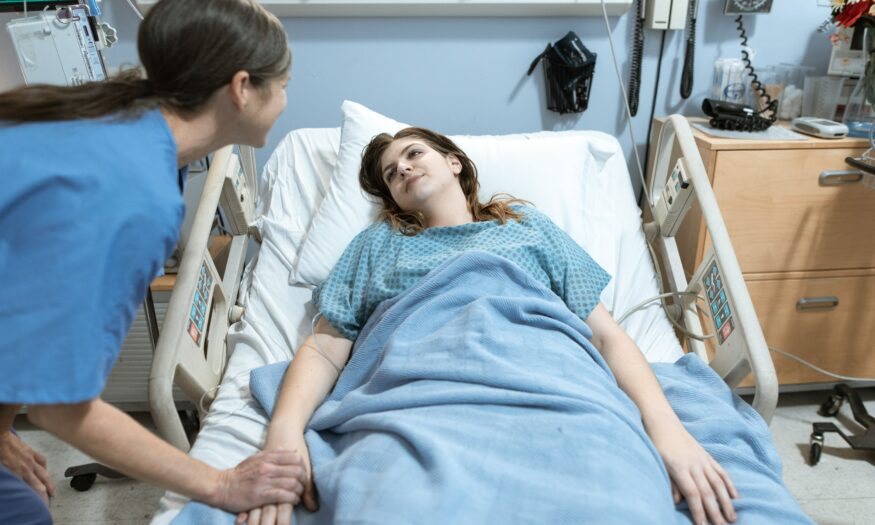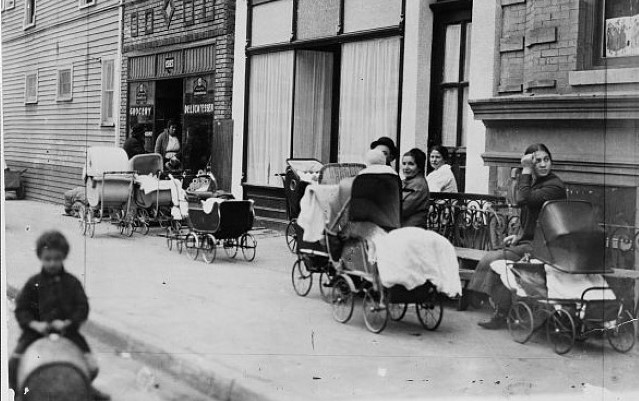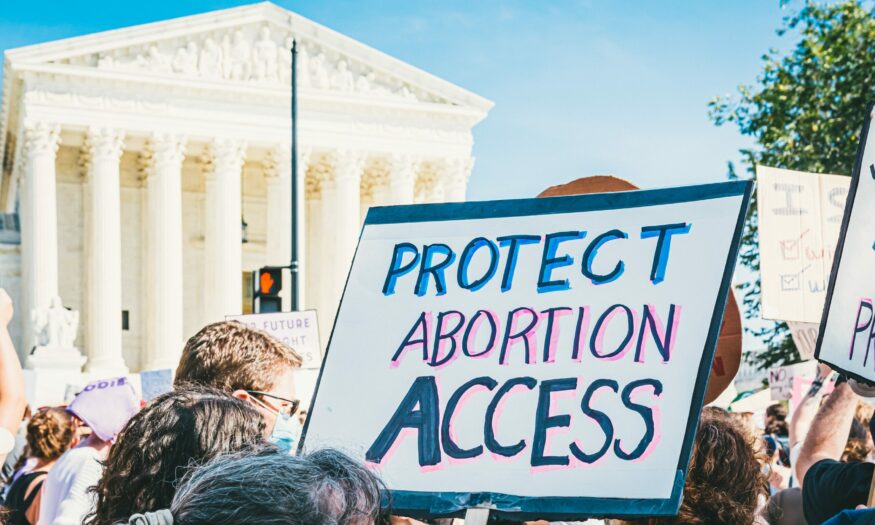Abortion Aftercare & Complications to Watch For
 Gayatri Malhotra/Unsplash
Gayatri Malhotra/Unsplash
-
Topics Include:
Abortion
Abortion (Self-Managed)
Abortion Pills
Contraception & Abortion
Abortion is a safe medical procedure. Most people who have an abortion feel fine and do not have any problems after an abortion. This article explains what you can expect after a first trimester abortion, and how to recognize if you need additional medical care.
After an Aspiration (Surgical) Abortion
After an aspiration abortion (also called an in-clinic or surgical abortion), you will go to a recovery area to rest. The staff will periodically check your bleeding and your vital signs, including heart rate, blood pressure, and oxygen. It is normal to bleed moderately or even to pass small clots. It is also normal to have cramps in your pelvis. The cramping generally improves over the first half hour.
Depending on the procedure, the type of anesthesia you had, and how you are feeling, you may stay in the recovery area from 20 minutes to an hour or more. If you had IV sedation or general anesthesia, you will need someone to drive or accompany you home.
Before you leave, the staff will provide information about what to expect over the next few days and what signs to look for that might indicate a complication. Be sure you know the emergency number to call in case problems arise. You may also receive antibiotics to prevent infection.
After a Medication Abortion
If you received your medications from an in-person doctor or clinic, you may be asked to return for a follow-up visit a week or so after you take the medication, to confirm that the abortion is complete. The clinician will do a physical examination, ultrasound or blood pregnancy test. (A blood pregnancy test is important because you can continue to test positive on home pregnancy tests for four to six weeks after an abortion, due to pregnancy hormones that are still in your body.)
If you received your medications by mail or from a telehealth clinic, you will be given instructions on what to do to manage your symptoms and how to get further care if needed.
At Home
It’s normal to feel tired or to have cramps for several days after an abortion. The amount of bleeding you have can range from none at all to a light or moderate flow, which may stop and then start again. If the cramping or bleeding is causing discomfort, try using a heating pad, resting, drinking plenty of water, and taking ibuprofen. Some signs of pregnancy, such as nausea, usually get better in a day or two, while others, including breast tenderness, may take a week or two.
You may be advised to rest and to avoid heavy lifting and strenuous exercise for the rest of the day. Self-care is important, but work, school and family circumstances may make some recommendations unrealistic. In addition, no studies have shown that these activities actually increase the risk of complications after abortion. The best guide is to listen to your body and use common sense.
It’s probably best to avoid putting anything into your vagina (no tampons, no sexual intercourse, and no douching) for a few days after an abortion. Not enough research has been done on the topic, but because the cervix is open, there may be a greater chance of an infection.
Dealing With Emotions
Emotionally, most people report feeling relief after an abortion, but it is also perfectly normal to have mixed or negative feelings. The decision to terminate a pregnancy can be sad or stressful. It may be made more upsetting by the stigma against abortion fueled by those who are opposed to abortion rights.
If you are looking for emotional support after an abortion, the organization Exhale offers after-abortion counseling, either on the phone or through texts. You can find other resources here.
Birth Control
Most people will have a normal period about 4-6 weeks after an abortion. Because you can get pregnant again even before your first period, it’s important to use reliable birth control if you don’t want another pregnancy.
Complications To Watch For After an Abortion
Medical complications after an abortion are rare in the United States, but they do happen. Your abortion provider is usually the best source of information or care if problems arise. If you require medical attention and cannot return to your abortion provider for care, ask for the best place to go in your area.
You may not have a choice in emergency situations, but try to stay away from Catholic-owned hospitals and health services, as they oppose abortion and may not give you the most compassionate and appropriate care. It’s important to know that the symptoms of a miscarriage and an abortion are the same. Your provider will not be able to tell that you had an abortion. If possible, bring a support person with you.
When you receive care at another location, be sure to let the abortion provider know. This helps the clinics track their abortion complications and improve the quality of their services.
Below is a list of symptoms that may indicate a problem.
Heavy Bleeding
In rare cases, a woman will bleed more than is safe during or after an abortion. The best way to tell if you are bleeding too much is to keep track of the number of pads you are using and the number and size of any clots. Call your provider immediately if you soak two maxi pads an hour for two hours in a row, if you pass multiple large clots (golf-sized or bigger), or if you begin to feel light-headed, short of breath, or like your heart is constantly beating very fast (palpitations).
Uterine cramping is normal after any kind of abortion. The main way that your uterus controls bleeding is to contract, squeezing the blood vessels shut. Heavy bleeding can occur if your uterus relaxes too much (uterine atony) or if some fetal or placental tissue is retained in the uterus (incomplete abortion). Very rarely, excessive bleeding can be due to a uterine injury that occurred during an aspiration abortion.
Severe Pain
It is common to have cramps or feel discomfort after an abortion. If your pain is severe and persists despite resting, using a heating pad and taking ibuprofen, contact your abortion provider. The most common cause of severe pain is an infection. Most infections are mild and can be treated at home with antibiotics. Post-abortion pain may also be caused by retained fetal or placental tissue, or blood clots (hematometra). If the tissue or clots do not pass on their own, you may need medication or another, or a first, aspiration abortion to empty the uterus.
In rare instances, pain may also indicate ectopic pregnancy, when an embryo is implanted outside of the uterus, most commonly in a fallopian tube. A growing pregnancy can stretch and burst the tube, causing severe pain and bleeding in your abdomen. An ectopic pregnancy requires immediate medical attention, because if it is causing the tube to rupture, you will need emergency surgery to have the ectopic pregnancy and fallopian tube removed.
Fever
If you have a sustained fever of 100.4° Fahrenheit or above, you may have an infection. Misoprostol, one of the drugs used in medication abortions, can cause a short-term fever. However, if your temperature remains elevated for several hours, call your provider, as you may require antibiotics.
Continued Symptoms of Pregnancy
Symptoms of pregnancy, such as nausea, bloating or breast tenderness, typically resolve within a week or two following an abortion. If these symptoms persist, you may still be pregnant and should visit your provider.
Taking a home pregnancy test is not useful, because you can continue to test positive for four to six weeks after a complete abortion, due to pregnancy hormones that are still in your body. If you have a positive urine or blood pregnancy test six weeks after the abortion, you may still be pregnant and may need to repeat the procedure.
If you began using a hormonal birth control method right after the abortion, know that these can cause pregnancy-like symptoms, particularly during the first few months of use.
Related Stories & Conversations:
My Story: Feeling Supported After My Abortion
My Story: Feelings Around Having an Abortion






